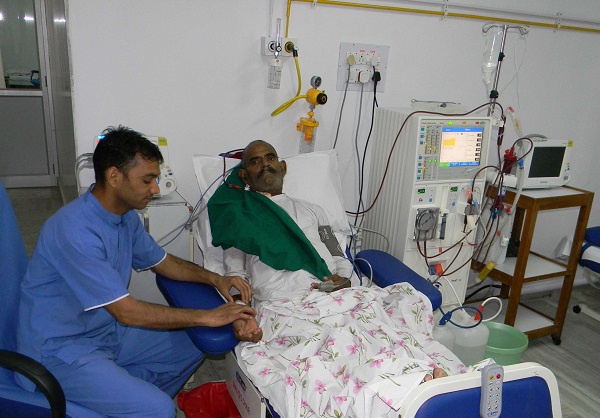Several kidney patients in Mumbai report renal failure that requires dialysis, and their numbers are going up – requiring more dialysis machines.
by Dr Jyotsna Zope | Senior Consultant Nephrologist, Mukta Kidney Dialysis Centre
Mumbai is witnessing a long list of kidney patients waiting for treatment. With the rise in renal failure cases, the number of patients requiring dialysis has increased by many folds in hospitals across the city. As a result, despite many having multiple dialysis machines, the patients are forced to wait, said Neprologists.
Dialysis is an important component to treat the patient in case of End Stage Kidney Failure (ESRD). The kidneys help in maintaining the body’s cleanliness on the inside. Dialysis is suggested when the kidney fails to do its job. It is an artificial means to clean our blood and in turn our body. ESRD is a last stage of kidney failure. After this stage, if a person wants to clean the body, dialysis or transplant is often recommended. In India, dialysis is offered at an affordable cost, thereby trying to meet the requirements of people suffering from ESRD.
The Haemodialysis Units are, till date, mainly located in major cities. Mumbai and its surrounding areas are catering to the huge demand with almost 210 centers of various sizes from one or two dialysis stations to 25 dialysis stations. Some of the dialysis units are part of the hospitals while others are just stand-alone units catering to the maintenance dialysis Patients. These entire units together have almost 2,000 haemodialysis machines working full-time. They are taking care of approximately 22,000 ESRD patients.
Doctors attribute this surge in cases of renal failure mainly to an increase in diabetes and hypertension.Figures show that almost 30 per cent of diabetic patients develop diabetic kidney disease. And with an exponential increase in the number of diabetics in India, the number of patients suffering from diabetic kidney disease is set to rise high. According to the International Diabetes Federation, one in 10,000 of the world’s population will have diabetes by 2035. Estimates show that people living with diabetes will surge from 382 million to 592 million by 2035.
There is not just the need for haemodialysis machines, but there is also the need to maintain the quality of dialysis, which is equally important as there are higher chances of catching infection from various sources. The leaders in this field are very eager to give quality care to all their patients, but they face mountainous difficulties. They find it difficult to maintain the quality standards, amounting to paucity of funds. There is a lot that needs to be done to give long fruitful life to our dialysis patients. People need to understand that prevention is better than cure, so get yourself properly screened for lifestyle diseases, including diabetes and hypertension to prevent kidney failure in the later stage.
(Pictures courtesy www.ghrc-abu.com. Image used for representational purpose only)
